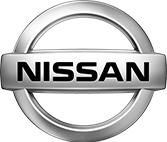
Vehicles are constantly evolving. Transmissions themselves have evolved from hydraulic and mechanical in the 1960s to electrical, pseudo-futuristic machinery today. Beyond the advancements of the transmission itself, material and fluid science have rapidly evolved and warrant discussion. For example, you may be surprised to learn that the red or green fluid sitting in the body of your motor is actually extraordinarily complicated, with an evolutionary history paralleling that of the automatic transmission itself. You may also be shocked to hear that many parts of your transmission were once made of cast iron. A few parts even today are still made of cast iron. Let’s explore the major developments in fluid and material science.
A Brief Introduction to Fluid and Material Science
Most revolutionary advances in fluid and material science have benefited the transmission, prolonging its longevity and efficiency. A few have led to a shorter lifespan. These changes were aimed at other evolutionary priorities, such as mileage standards.
The transmission is made of both hard and soft parts, and both aspects have advanced in different, mutually inclusive ways. Fluid, the fascinating substance sitting under your hood, has accommodated the transmission’s evolutionary journey.
What You Need to Know About Material Science
Hard Parts
Nearly every advancement in engine, vehicle, and transmission design for passenger vehicles was intended to increase fuel efficiency. Moreover, miles per gallon (MPG) is an important factor in consumer preference, especially during periods of high fuel prices. Perhaps more importantly, MPG optimization is required by many governmental regulations, especially in California. This makes fuel efficiency such a high priority. One organization wrote:
“Federal law directing increases in fuel economy became necessary because oil consumption had been steadily escalating, in large part due to the relative stagnation in CAFE [Corporate Average Fuel Economy] standards, the doubling of annual vehicle miles traveled in the previous 25 years, and a sizable increase in the market share of less-efficient SUVs and light trucks… In 2009, a historic agreement between the Federal Government, state regulators, and the auto industry established a national program to implement these first meaningful fuel efficiency improvements in over 30 years and the first-ever global warming pollution standards for light-duty vehicles.”
How has material science evolved to wrestle the issue of MPG? A key factor in MPG is weight. To combat weight, the resources utilized to build the hard parts of a transmission have evolved. Years ago, many parts were made of cast iron, one of the sturdiest but heaviest metals. As time has gone on, a shift to lighter materials, most notably aluminum, has occurred. However, not every evolution increased the transmission’s longevity. Aluminum is thin and less durable than cast iron, causing parts constructed with aluminum to more easily break or wear, especially if impacted by an outside object.
Ultimately, this increased wear-and-tear leads to expensive repairs. For example, certain parts – such as the transmission case or valve body – are pricey to repair and relatively quick to damage. In our understanding at Advanced Transmission Center, old-school valve bodies made of cast iron rarely experience wear. However, we commonly change aluminum valve bodies in transmission rebuilds. Depending on the vehicle’s make, an OEM valve body alone can easily cost over $2,000.
Today, steel is the default material utilized for many hard components, such as planetary gear sets, shafts, etc. Steel sits comfortably between the heavy nature of cast iron and the flimsiness of aluminum. Although not as light as aluminum, steel weighs significantly less than cast iron. Supporting the case for steel has been the advancements in steel production and chemistry. It has created “hardened steel,” increasing both the performance and longevity of a transmission.
Soft Parts
Less durable than hard parts, the soft parts of a transmission include bands, gaskets, seals, filters, and clutches. Soft parts, too, have evolved over time. For example, the sheer number of soft parts has increased with the complexity of the transmission. The materials utilized in creating soft parts have also evolved.
- Seal Performance: Seal performance has dramatically changed. Years ago, though a transmission could work well, poor fluid seals resulted in fluid loss and premature transmission failure. This, of course, led to many expensive repairs, brought about by the failure of an inexpensive item. To avoid this issue, seals today are created with high-performance polymers, allowing for heightened heat, chemical, and time resistance.
- Clutches: Advancements in material formulations have allowed for softer engagement, increased longevity, and less friction release. Clutch material also differentiates between specific vehicles. For example, the clutch material in a Ford Focus should differ from an F-350 diesel truck due to the application on load at each shift.
- Sealing Rings: Formerly made of metal, any wear would lead to fluid leakage. Resolving the issue, sealings rings were redesigned to incorporate Teflon material. However, adding Teflon material to the equation increased material diversity once more, creating another consideration for fluid engineers to deal with.
- Filters: Because proper working transmissions didn’t produce significant debris, filters were not added to transmissions in early iterations. Screens predominately functioned to collect the limited debris of ancient transmissions. As the transmission evolved, filters were slowly added. Eventually, replaceable filters were added and, in some cases, multiple filters. In other models, external filters were added between the transmission and radiator. The purpose behind filters: that exhausted clutch material from the transmission or torque converter would get caught in one of the filters instead of other transmission components, such as solenoids or the valve body. Debris in these latter components could cause malfunction and lead to a major repair.
The Basics of Fluid Science
Transmission fluid is designed to serve two primary purposes: decreasing friction and preventing overheating. To effectively serve these purposes, transmission fluid engineers have been required to evolve fluid alongside hard and soft transmission parts. Traditional ATF (automatic transmission fluid) was formulated for transmissions with fewer gears and less complexity. As transmission materials have evolved, ATF must work better with soft parts while protecting hard parts. An excellent example of a failed partnership involves traditional Type F fluid. Often, a full transmission rebuild was required after utilizing this fluid, because Type F ruined basic transmission seals leading to leakage and overheating due to low fluid levels.
To decrease friction as the clutches engage in a modern transmission, the fluid must be able to easily travel from various points in the transmission. Highly viscous fluid minimizes the ability for transmission fluid to flow smoothly. Traditional ATF was highly viscous, causing it to be unable to travel through a solenoid without high-pressure levels. Pressure levels of that intensity can cause wear. Lower viscosity, then, is a key goal of recently engineered fluids.
Fully synthetic transmission fluid, one such recently engineered product, is less viscous and more reliant on chemical formulation. Compared to its predominately petroleum-based predecessor, synthetic transmission fluid allows better clutch engagement and eliminates chattering between gears. Is this important? Absolutely! Even if a driver knows nothing about the mechanical world underneath his or her hood, chattering between gears is a clear sign that something is wrong with the transmission and can cause premature wear of the clutches.
Oxidation properties have also been enhanced in recently engineered fluids. When air is introduced to a fluid, subsequent reactions adversely impact fluid performance. Enhancement of oxidation properties minimize these reactions, ultimately leading to fluid longevity.
Embracing the Future of Transmission Repair
For most drivers, mystery surrounds what goes on beneath the hood. Therefore, we explored the future of transmission repair in a three-part series, designed to unveil some of the mystery surrounding the world beneath your hood. In our first blog, we explored the changing and increasingly important role of remanufactured transmissions to the repair industry, from the 1960s to today. Then, we guided you through the transmission’s transformative journey, discussing the increasing complexity of electrical components. Finally, we conclude our series with a look into the intricate evolution of fluid and material science. Our goal: to bring you into the future of transmission repair!
At Advanced Transmission Center, our mechanics understand the complexity of transmissions and the future of the industry thanks to their years of experience. If your vehicle is experiencing transmission issues, stop into our shop for trustworthy, honest, and transparent service. Read more on why you should choose us as your local repair shop.
Call us today to schedule an appointment at either of our locations.
Southwest Metro Denver (Lakewood/Littleton): Call (303) 922-4102
Northwest Metro Denver (Westminster): Call (303) 421-4140
You can also send us a message!
Advanced Transmission Center is a Colorado-owned and operated auto repair shop with locations in Denver / Lakewood and Westminster. ATC specializes in driveline issues such as automatic transmission repair, four wheel drive repair, clutch replacement, differentials, manual transmissions and CVT. As Colorado's first AAA approved shop our goal is to provide accurate, timely service with exceptional customer satisfaction. All of our technicians are certified in the latest makes and models and we are one of the few transmission repair shops with a nationwide warranty.



 Free Customer Towing Service
Free Customer Towing Service  Free TrueTest™ Inspection
Free TrueTest™ Inspection  Fast Transmission Services
Fast Transmission Services  Comprehensive Warranty in Denver
Comprehensive Warranty in Denver 

























